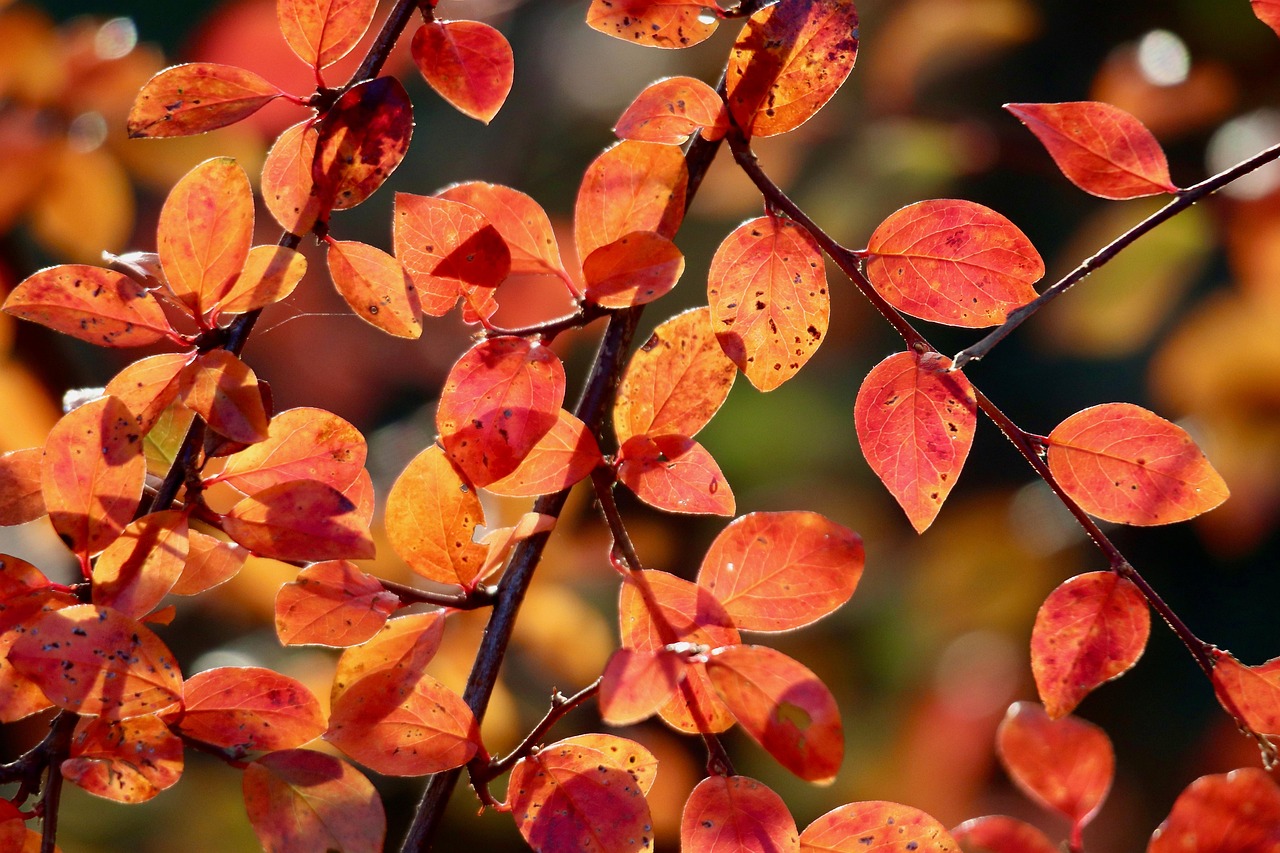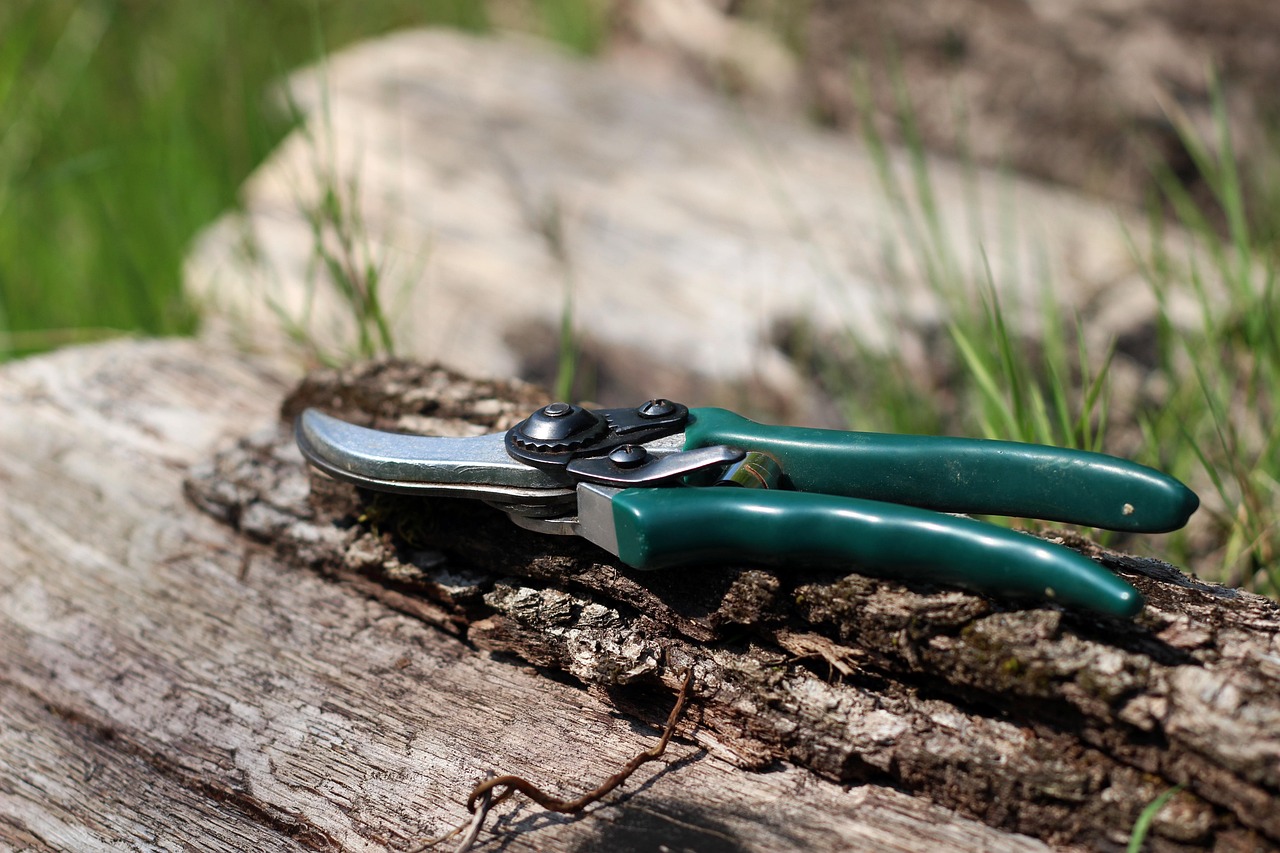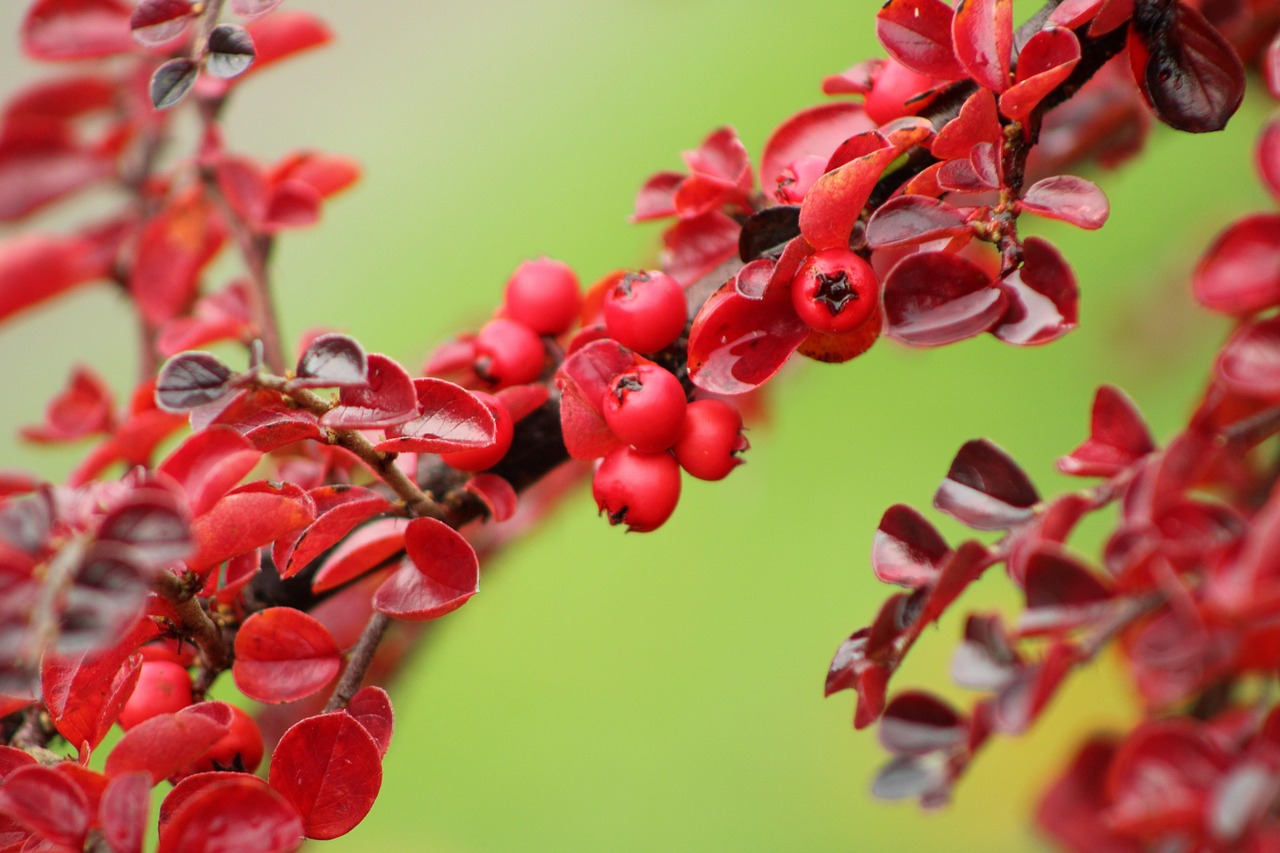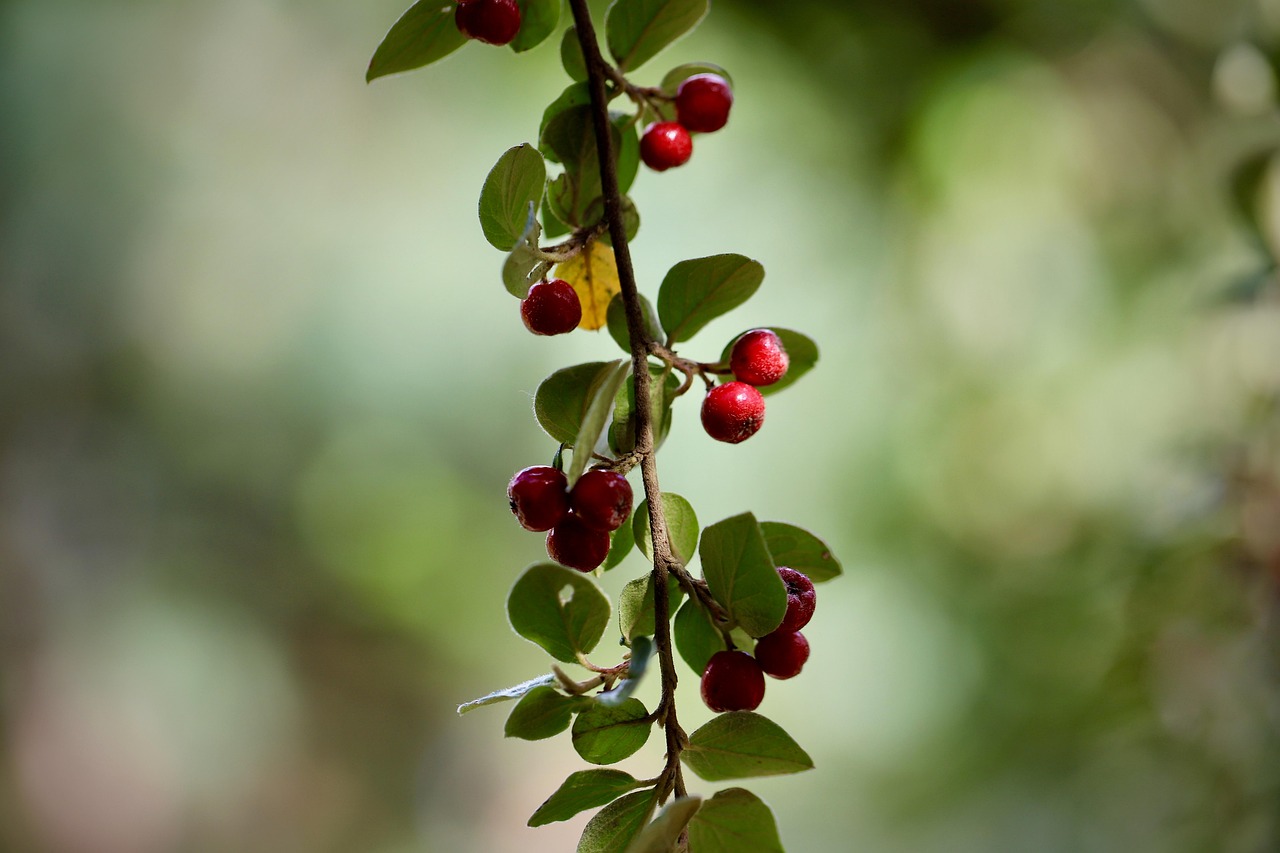Cotoneaster tree pruning involves strategic cutting to enhance plant health and growth. Proper techniques include removing dead or diseased branches, thinning out dense areas, and shaping the tree for better sunlight exposure and airflow.
Cotoneaster is a versatile genus of flowering plants known for their attractive foliage and fruit. They are popular in gardens due to their ornamental value and ability to thrive in various conditions. However, to maintain their beauty and promote healthy growth, regular pruning is essential. Pruning helps shape the tree, encourages new growth, and prevents diseases. Understanding the right time and methods for pruning is crucial for optimal results.

There are several species of cotoneaster, including the Cotoneaster horizontalis, which is often used as ground cover, and Cotoneaster lacteus, known for its height and berries. Each species may require slightly different pruning techniques, but the fundamental steps remain consistent. It is important to become familiar with your specific cotoneaster type before beginning the pruning process.
Understanding the Importance of Pruning
Pruning cotoneaster trees is not just about aesthetics; it plays a vital role in maintaining the plant’s health. Here are some key benefits of regular pruning:
- Encourages Growth: Pruning stimulates new growth by removing older branches that may be hindering the plant’s overall health.
- Improves Air Circulation: Thinning out dense areas allows better airflow, reducing the risk of fungal infections.
- Enhances Sunlight Exposure: Properly pruned trees receive more sunlight, which is crucial for photosynthesis.
- Removes Dead or Diseased Wood: Cutting away unhealthy parts of the tree prevents disease from spreading.
Timing is a critical factor in successful pruning. The best time to prune cotoneaster trees is during late winter or early spring before new growth starts. This timing allows the tree to heal quickly and promotes vigorous growth during the growing season. However, if you notice any dead or diseased branches, they should be removed as soon as possible, regardless of the season.

Tools Needed for Pruning
Having the right tools is essential to effectively prune your cotoneaster trees. Here are some basic tools you will need:
| Tool | Purpose |
|---|---|
| Pruning Shears | For cutting small branches (up to ¾ inch thick). |
| Loppers | For larger branches (up to 2 inches thick). |
| Saw | For cutting thick branches that cannot be managed by shears or loppers. |
| Gloves | To protect hands from cuts and sap. |
| Disinfectant | To sterilize tools after cutting diseased wood. |
Before starting the pruning process, it is crucial to inspect your tools for cleanliness and sharpness. Clean tools prevent the spread of diseases from one plant to another. Sharp blades make clean cuts that heal faster for the tree.
Steps for Pruning Cotoneaster Trees
The process of pruning cotoneaster trees can be broken down into several clear steps:

- Assess the Tree: Begin by examining the tree’s overall structure. Look for any dead, damaged, or diseased branches that need immediate attention.
- Remove Dead or Diseased Parts: Cut away any wood that shows signs of rot or disease. Make cuts at least 6 inches below visible signs of disease to ensure complete removal.
- Thin Out Dense Areas: Identify areas where branches are overcrowded. Selectively remove branches to improve light penetration and air circulation.
- Shape the Tree: Trim back long branches to maintain a balanced appearance. Aim for a natural shape that enhances the tree’s beauty.
- Clean Up: Collect and dispose of all cuttings properly. This helps prevent any potential spread of diseases.
By following these steps, you can ensure that your cotoneaster trees remain healthy and vibrant throughout their growing seasons. Regular maintenance will lead to stronger plants that can withstand pests and diseases more effectively.
Pruning may seem daunting, but with practice, you will gain confidence in your abilities. Always remember to observe safety precautions while using sharp tools and wear protective gear as needed.
Common Mistakes to Avoid When Pruning Cotoneaster
While pruning is beneficial, there are several common mistakes that gardeners often make. Avoiding these pitfalls can lead to healthier trees and better results. Here are some of the most frequent errors:

- Pruning at the Wrong Time: Pruning during the wrong season can shock the tree. Avoid pruning in late fall or early winter when the tree is preparing for dormancy.
- Over-Pruning: Removing too many branches can stress the plant. Always leave enough foliage for photosynthesis.
- Ignoring Tree Structure: Cutting branches without considering the overall shape can lead to an unbalanced look. Always step back to assess your work.
- Using Dull Tools: Dull tools can tear branches, leading to injury. Ensure your tools are sharp for clean cuts.
- Failing to Clean Tools: Not sanitizing tools between cuts can spread diseases. Always disinfect after cutting diseased wood.
Avoiding these mistakes will not only help your cotoneaster trees thrive but will also enhance their visual appeal in your garden.
Post-Pruning Care for Cotoneaster Trees
After completing the pruning process, it is essential to provide proper care to help your cotoneaster trees recover and thrive. Here are some post-pruning care tips:
- Watering: Ensure that the tree receives adequate water after pruning. This helps support new growth and recovery.
- Mulching: Apply a layer of mulch around the base of the tree. Mulch retains moisture and suppresses weeds, promoting healthy growth.
- Fertilizing: After pruning, consider using a balanced fertilizer. This provides essential nutrients that may have been depleted during the pruning process.
- Monitoring for Pests and Diseases: Keep an eye on the tree for any signs of pests or diseases. Early detection can prevent serious issues.
Implementing these care strategies will enhance recovery and promote robust growth in your cotoneaster trees.
Seasonal Pruning Considerations
The time of year significantly influences how you should approach pruning cotoneaster trees. Understanding seasonal considerations is crucial for effective maintenance.
Spring Pruning
Spring is an ideal time to prune cotoneaster trees as they prepare for active growth. Here are some key points to consider:
- Timing: Aim to prune before the new buds open. This timing ensures minimal stress on the plant.
- Focus: Concentrate on removing dead or damaged branches and thinning crowded areas to promote airflow.
Summer Pruning
Summer pruning can be beneficial but should be approached with caution. Here are some tips:
- Avoid Heavy Pruning: Light trimming is acceptable, but avoid extensive cuts that could hinder growth during peak season.
- Manage Size: Use summer pruning to control the size and shape of the tree as needed.
Fall Pruning
Fall is generally not recommended for major pruning, but minor maintenance can be performed:
- Remove Dead Wood: If you notice any dead branches, remove them to prevent disease spread over the winter.
- Avoid Major Cuts: Heavy pruning should be avoided as it can expose the tree to winter damage.
Winter Pruning
Winter is also not ideal for pruning cotoneaster trees; however, if necessary, here are some considerations:
- Wait Until Dormancy: Only prune when the tree is fully dormant. This usually occurs in late winter before spring growth.
- Prune for Shape: Winter pruning can help maintain a desired shape, but avoid removing too much foliage.
Pest and Disease Management Post-Pruning
Proper pruning can help minimize pest and disease issues; however, it is essential to remain vigilant after pruning. Here are common pests and diseases that affect cotoneaster trees along with management strategies:
| Pest/Disease | Description | Management Strategy |
|---|---|---|
| Cotoneaster Mite | A small pest that causes leaf discoloration and distortion. | Use insecticidal soap or neem oil for control. |
| Crown Gall | A bacterial disease causing galls or growths on roots and stems. | Remove infected parts and ensure proper drainage in soil. |
| Powdery Mildew | A fungal disease appearing as white powdery spots on leaves. | Avoid overhead watering and apply fungicides if necessary. |
Regular monitoring and prompt response to any pest or disease issues will help keep your cotoneaster trees healthy and thriving.
Pruning Techniques for Different Cotoneaster Species
Cotoneaster trees encompass a variety of species, each requiring specific pruning techniques to promote healthy growth. Understanding the characteristics of different species can enhance your pruning efforts. Here are some common cotoneaster species and tailored pruning methods for each:
Cotoneaster Horizontalis
Known for its low-growing, spreading habit, Cotoneaster horizontalis is often used as ground cover. Its pruning needs include:
- Light Pruning: Focus on removing any dead or damaged branches to maintain health.
- Shaping: Trim back excessive growth to keep the plant flat and encourage denser foliage.
- Timing: Early spring is ideal for pruning before the new growth begins.
Cotoneaster Lacteus
Cotoneaster lacteus is a taller species, often used as a specimen tree or hedge. Its pruning requirements are slightly more involved:
- Thinning: Remove interior branches to improve air circulation and light penetration.
- Shaping: Maintain its natural shape by cutting back overly long branches.
- Timing: Pruning should be done in late winter or early spring just before new growth.
Cotoneaster Franchetii
This species is well-known for its elegant arching branches and vibrant berries. Pruning techniques include:
- Selective Pruning: Focus on thinning crowded areas to enhance overall structure.
- Removing Suckers: Eliminate any suckers that grow from the base to maintain a clean appearance.
- Timing: Late winter is best to avoid disrupting the flowering cycle.
Enhancing Fruit Production Through Pruning
Cotoneaster trees can produce attractive berries that add visual interest to gardens. Pruning plays a vital role in enhancing fruit production. Here are some steps to follow:
- Encourage New Growth: Pruning stimulates new growth, which is essential for berry production. Focus on cutting back older wood to promote vigorous young shoots.
- Maintain Airflow: Thinning out dense areas allows sunlight to reach more parts of the tree, fostering better berry development.
- Avoid Excessive Pruning: While removing older wood is beneficial, be careful not to over-prune, as this may reduce the number of flowering shoots.
The right balance of pruning can significantly increase berry yield while maintaining the health and aesthetics of the tree.
Tools and Techniques for Effective Pruning
The choice of tools and techniques can greatly affect the outcome of your pruning efforts. Here’s a guide to selecting the right tools and employing effective techniques for cotoneaster trees:
Recommended Tools
- Hand Pruners: Suitable for small branches, providing precision in cuts.
- Bypass Loppers: Ideal for medium branches, allowing you to cut with more force without damaging the plant.
- Saws: Use a pruning saw for larger branches that require more significant cutting power.
- Pruning Shears: A good option for shaping and fine-tuning smaller areas.
Pruning Techniques
Using the right technique is essential for effective pruning. Here are some techniques to consider:
- Cutting at an Angle: Always make cuts at a slight angle to prevent water accumulation on the cut surface, reducing the risk of rot.
- Avoid Topping: Do not cut off the tops of trees abruptly, as this can lead to unsightly growth patterns and damage the tree.
- Cuts Close to the Branch Collar: Make cuts just outside the branch collar—the swollen area where a branch meets the trunk—to promote healing.
- Thinning Cuts: Instead of cutting back entire branches, selectively remove smaller branches to promote better airflow and light penetration.
The Role of Mulching in Pruning Care
After pruning, applying mulch around the base of your cotoneaster trees can provide several benefits. Here’s how mulching aids in post-pruning care:
- Mositure Retention: Mulch helps retain soil moisture, ensuring that your trees have adequate water during dry periods.
- Weed Suppression: A layer of mulch prevents weed growth, which competes with your trees for nutrients and water.
- Temperature Regulation: Mulch insulates the soil, helping maintain consistent temperatures that benefit root growth.
- Nutrient Addition: Organic mulches break down over time, enriching the soil with nutrients that support healthy growth.
Selecting the right type of mulch—such as wood chips, bark, or shredded leaves—can further enhance its effectiveness. Aim for a thickness of about three inches around the base of your trees, keeping it away from direct contact with the trunk to prevent rot.
Maintaining Healthy Cotoneaster Trees Year-Round
Beyond pruning and mulching, there are additional practices that can help you maintain healthy cotoneaster trees throughout the year. These practices will not only support plant health but also enhance the overall aesthetics of your garden.
Watering Practices
Proper watering is crucial for the growth and vitality of cotoneaster trees. Here are some essential tips:
- Deep Watering: Instead of frequent shallow watering, provide deep watering sessions to encourage roots to grow deeper into the soil.
- Frequency: Water during dry spells, particularly in the first few years after planting. Established trees may require less frequent watering.
- Soil Check: Before watering, check the soil moisture by digging a small hole near the root zone. If the soil feels moist 2-3 inches down, you can hold off on watering.
Fertilization Techniques
Fertilization can significantly impact the growth and fruiting of cotoneaster trees. Consider these strategies:
- Balanced Fertilizer: Use a balanced fertilizer in early spring to provide necessary nutrients. A 10-10-10 NPK fertilizer can be effective.
- Organic Options: Organic fertilizers, such as compost or well-rotted manure, can improve soil structure and nutrient content over time.
- Avoid Over-Fertilizing: Too much fertilizer can harm your trees. Follow package instructions carefully and adjust based on soil tests if necessary.
Seasonal Monitoring
Regular monitoring of your cotoneaster trees throughout the seasons is vital for early detection of problems. Here are some tips for effective monitoring:
- Inspect Leaves: Look for signs of discoloration, spots, or wilting leaves, which could indicate pests or diseases.
- Check for Pests: Be vigilant for common pests like aphids or spider mites. Early intervention can prevent serious infestations.
- Observe Growth Patterns: Take note of any unusual growth patterns or changes in fruit production, which may signal nutrient deficiencies or environmental stress.
Pruning for Aesthetics
Apart from health benefits, pruning can enhance the visual appeal of your cotoneaster trees. Here are some aesthetic considerations:
- Shape Maintenance: Regularly prune to maintain a pleasing shape that complements your landscape design.
- Flower and Fruit Production: Encourage flowering by selectively pruning branches to enhance light penetration, which will improve fruit visibility.
- Themed Landscaping: Consider how cotoneaster trees fit into your larger landscape theme. Pruning can help integrate them seamlessly with other plants.
Final Thoughts
Cotoneaster trees are remarkable plants that offer both beauty and resilience. By following proper pruning techniques, maintaining effective watering and fertilization practices, and monitoring your trees throughout the year, you can ensure they thrive in your garden. Understanding the specific needs of different cotoneaster species will further enhance your gardening success.
The combination of careful pruning, proper post-pruning care, and ongoing maintenance will lead to healthier, more vibrant cotoneaster trees that enrich your landscape. Whether you’re looking for ground cover, a specimen tree, or a hedge, these steps will help you achieve optimal growth and aesthetic appeal.
Remember that patience is key in gardening. With time and dedication, your cotoneaster trees will flourish and provide enjoyment for years to come. Happy gardening!
